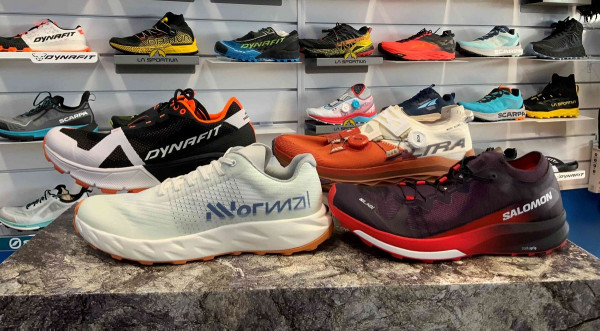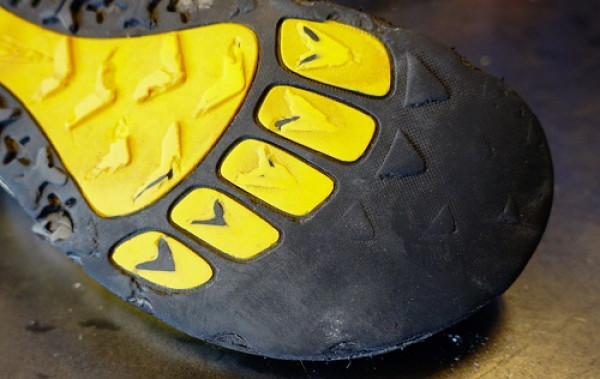7/15/2023 Q&A with Adam Loomis, Wasatch BFT-FKT
By Zak Munro - SkyRun Staffer and 100-Mile Distance Hopeful
About authorThe Wasatch BFT (Back to Front to Timp) is a 100-mile route that starts in Park City, winds its way through the central Wasatch, and finishes with a climb of Mt. Timpanogos. In this Q&A I sat down with the creator of the BFT: ultra runner, skimo racer, former W.U.R.L. FKT holder, and Wasatch hardman Adam Loomis to chat about his new route. During our conversation we dove into his motivation to step outside the box and put up a difficult new route, the gear he used, and his highlights from a previous attempt.

Photo Credit: Caleb Olson
What’s been your experience with technical mountain ultras?
It seems like it’s been a while since I first started ultra running but it’s only been about 5 years since I completed my first 50k. After finishing my Nordic Combined career with the US National Team in 2018, I stayed in the local mountain running scene, competing in races like the Cirque Series and completing the W.U.R.L. Generally, I have always been a bit better at longer races, and being here in Utah where we have so many accessible routes and mountain ranges, the inspiration has never been lacking. When I did the W.U.R.L., I had never done anything that long and was happy with how well it went, so longer distances have been on my radar.
What was your general inspiration for mapping a route like the Wasatch BFT?
Leading into 2020, I didn’t have much going on in the way of races or objectives. I decided to sign up for Run Rabbit Run in Steamboat Springs and began the process of training for the 100-mile distance. The race ended up being canceled due to Covid but having already started training, I started to think about what I could do as a consolation. Earlier that summer I did a 100-plus mile mountain bike route with some friends and saw how amazing it was to get something done while also being supported. I just thought it would be interesting to think outside the box.
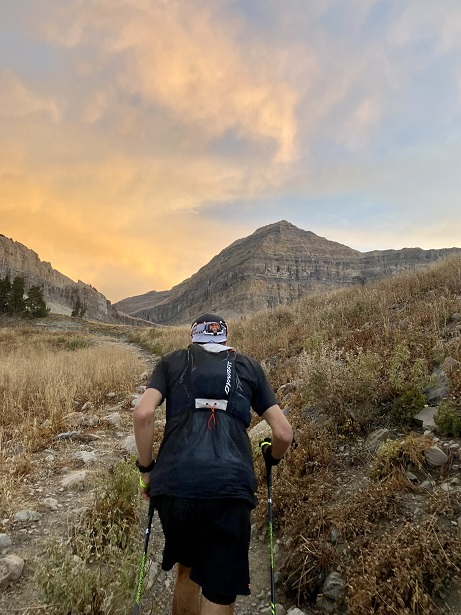
Photo Credit: Griffin Briley
You gave your new route a try in 2020 but didn’t finish. What happened on that attempt?
I gave it a go right around the time Run Rabbit Run would have taken place. I did feel a bit underprepared, and it wasn't the easiest option for my first 100-miler. A few days before my effort I did some aid station drops and had a friend leave his truck with premixed hydration powder in bottles. They were left out in 100-degree heat, and they effectively fermented. I realized this a few hours after picking them up and had to ditch the fermented drink mix. This left me with only a half liter of water, 40 miles into the effort, and headed up Broads Fork to the most difficult section. I ended up pulling the plug once getting to Alta, which was around 100km and 17 hours into the effort. I think with the lack of preparedness, combined with feeling terrible for the previous 9 hours, I knew it just wasn’t my day.
Fast forward to your successful attempt last summer. How did that shape up?
Well, my bad luck streak sort of continued. I was signed up for Run Rabbit Run again, but four weeks out I crashed my bike, breaking two ribs. I remember thinking right away, “Yeah there’s no chance I can recover in time, but if I could do the Wasatch BFT it would be a huge consolation”. I spent the next few weeks resting, recovering, and hiking on a treadmill. I followed this up with a week and a half of actual running, and everything ended up coming together with the weather. Though I was disappointed not to be competing in the race I intended to do, with so much time spent recovering from this injury, I was super motivated and appreciative to get a shot at this route again.
What ended up working for you this time around?
First, I think a couple more years of ultra-running experience helped, along with having a 100-mile race under my belt [Adam placed first at Bear 100 in 2021]. Having a lot of committed people to crew me and not relying on a super specific nutrition plan, like my previous attempt, helped in the long run. This time around I had a much better idea of actual split times for meeting my crew. During my first attempt, when coming down Mill B North towards Broads Fork, my timetable was way off. More preparedness combined with even more motivation to get it done helped a lot. I’d also like to give a shout-out to those who helped crew and pace me including Griffin Briley who stayed out late on a school night and Caleb Olson for pacing me from Broads Fork to Timp, which was a mega 12-hour section.
Did you have any favorite sections of the Wasatch BFT?
I started at 7 pm from Park City Mountain Resort and headed up to Pinecone Ridge with a friend. I ended up hitting the Crest Trail around sunset with the goal of getting to the Cottonwood Ridgeline by sunrise, which ended up working out. After putting in the 5-thousand-foot climb up Broads Fork to the ridge, switching from running/hiking to the sustained scrambling section was super fun.
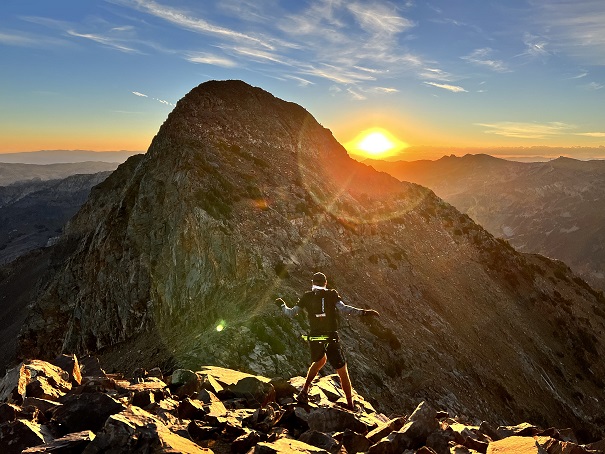
Photo Credit: Caleb Olson
Did you end up having any low points throughout the effort?
Early on, when I was in Millcreek, I started to get a fair amount of stomach distress, but I attributed that to starting in the evening. It was difficult to know exactly how much to eat and drink beforehand. Around Brighton, I ended up getting off trail a bit, which messed with my head. That combined with being generally spent from the Cottonwood Ridge Line, my progress slowed quite a bit. Looking back, I was a bit behind my intended splits, but those times were rough estimates. With the encouragement of my friends supporting me, I kept moving forward and I’m sure glad that I didn’t quit. Once I made it onto the flanks of Timpanogos, I knew I was going to get it done.
Switching gears, what were some of the pieces of gear that you brought?
The Dynafit Ultra 100 has been my go-to shoe for longer objectives. They work super well for those distances while being proficient on the Cottonwood Ridge Line scrambling section. During the night I used a headlamp and a waist light, which was quite nice since it was October and dark for much longer. Poles also helped a lot on some of the long climbs like Broads and Timp, and to accommodate them I modified my shorts to add pole loops.
Do you think you’ll continue to pursue more FKT new style routes or primarily established races?
I still love racing and established races just end up being much easier logistically. That said, if the route is meaningful to me, it doesn’t necessarily matter. Overall, if I get in the race mindset, I don’t think it matters if it's an established race or FKT, but it’s nice to have both opportunities.
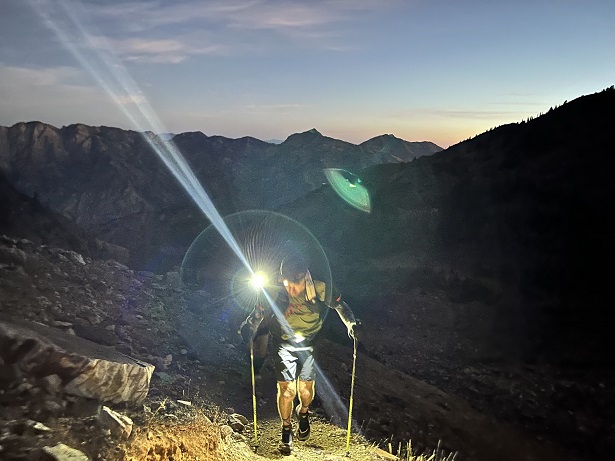
Photo Credit: Caleb Olson
Looking back, after mapping and completing your route, do you think it will gain similar popularity as the W.U.R.L. or Millwood 100, which have become quite popular?
I think it would be super cool to see people get out and complete the route. Compared to the routes listed above, the BFT is a bit harder to crew but it’s a point-to-point traverse that connects several very interesting sections of what I would consider the heart of the Wasatch. I think it's an amazing route. Sub 24 hours to me seems like it would be very possible in the future (Adam ended up completing the route in 26 hours and 44 minutes).
What's next on your list for this summer?
Currently, I am working through some knee issues that have held me back, but hopefully, it is only tendonitis. My main goal is to recover in time to race the Run Rabbit Run, but that goal is pretty up in the air. I guess I am still learning how challenging being an ultra-runner can be!
For those interested in learning more about the details of the Wasatch BFT you can check out Adam's Strava, as well as his Fastest Known Time page. You can also follow Adam on IG.
Comments
